Mental Health Research Evolution
NIMH Celebrates 75 Years of Transforming Treatment, Prevention
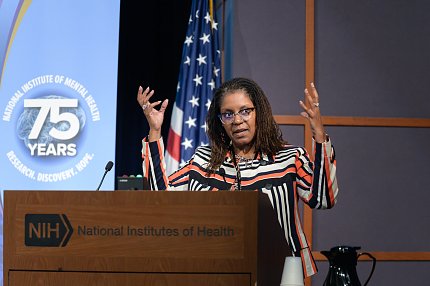
Photo: Marleen Van Den Neste
The most significant advances in managing and treating mental health conditions did not happen by accident, but rather through several decades of National Institute of Mental Health (NIMH)-supported research, said NIMH Director Dr. Joshua Gordon.
“For the past 75 years, our government, through NIMH, has made a commitment to transform the treatment and prevention of these devastatingillnesses,” Gordon said during the institute’s 75th anniversary symposium.
Gordon’s remarks opened the “NIMH 75th Anniversary Kick-Off: The Evolution of Mental Health Research” symposium recently in the Natcher Bldg.
On July 3, 1946, President Harry Truman signed the National Mental Health Act, which called for creating NIMH. Three years later, the institute was formally established. From the beginning, the institute has been committed to transforming the understanding and treatment of mental health.
There’s a false narrative that’s oft repeated, said Gordon. It suggests “everything that has been done to improve care for individuals with mental illness happened accidentally and investments in mental health research haven’t changed the way we treat illness.”
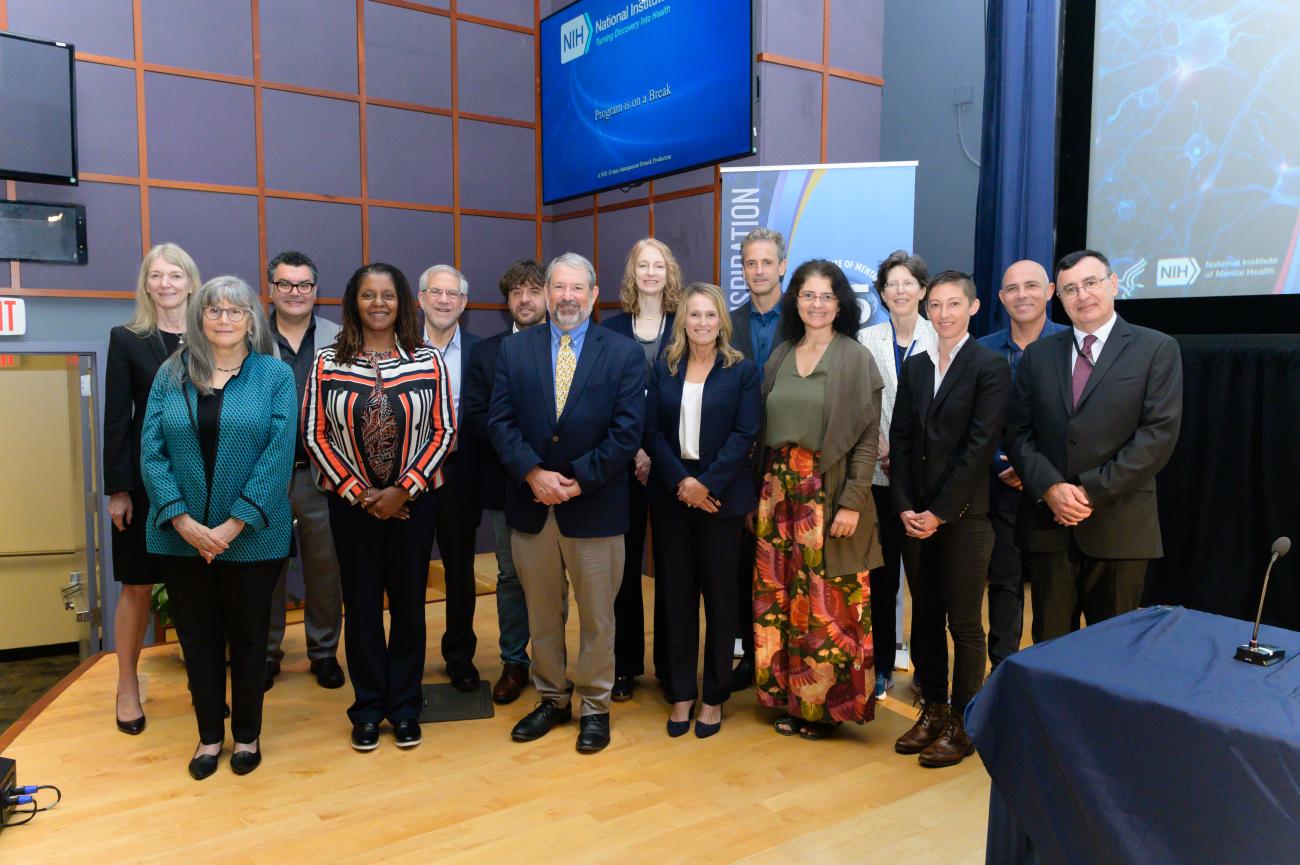
Photo: Marleen Van Den Neste
Since its early days, NIMH has transformed the outlook for individuals with mental illness. Dr. Julius Axelrod’s basic research on neurotransmitter re-uptake in the 1950s and 1960s led to the development of a new class of antidepressants.
NIMH-supported research led to development of what is now known as cognitive behavioral therapy. In the 1970s and 1980s, studies demonstrated the effectiveness of the therapy for treating various mental disorders, including depression, anxiety and phobias.
More recently, the Recovery After an Initial Schizophrenia Episode (RAISE) research initiative demonstrated the effectiveness of coordinated specialty care to treat first-episode psychosis in communities. There are now more than 300 coordinated specialty care clinics across the country that help thousands of patients every year.
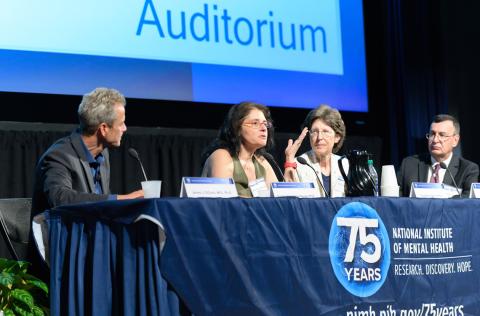
Photo: Marleen Van Den Neste
NIMH’s budget is nearly double what it was just seven years ago, when Gordon’s tenure as director started. The White House and Congress share a commitment to funding mental health research.
Despite the many accomplishments, there’s still much work to do.
“We’re in a mental health crisis, especially for our youth,” Gordon emphasized. Scientists around the world are ready to “face down that challenge with new ideas and approaches” that reach everyone.
For far too long, many people have discounted the importance of mental health, said then-Acting NIH Director Dr. Lawrence Tabak. Since the Covid-19 pandemic disrupted daily routines, there is more widespread appreciation for how essential mental health is to health and well-being.
“Mental illness is not always easy to see, but that makes it even more crucial to study and understand,” Tabak said.
NIMH has invested billions of dollars in research to revolutionize our understanding of the human brain, he noted.
In 1993, the institute coordinated the Brain Project, a multi-institute effort that developed an internationally accessible, comprehensive neuroscience database. Twenty years later, NIMH co-led with NINDS the BRAIN Initiative®, a partnership between federal and non-federal partners with a goal of accelerating development of innovative neurotechnologies.
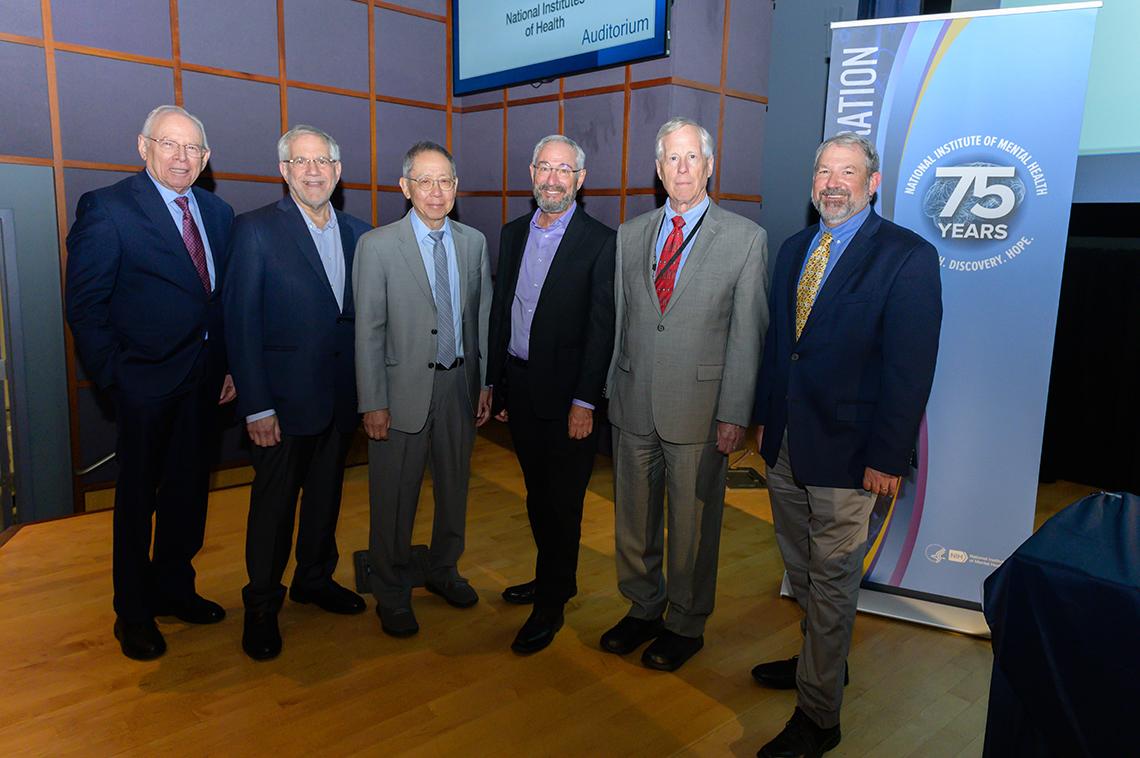
Photo: Marleen Van Den Neste
Being part of the initiative was rewarding for Dr. Cori Bargmann, former co-chair of the BRAIN working group of the advisory committee to the NIH director. Giving the symposium’s scientific keynote address, Bargmann said BRAIN allowed her and other scientists to return to the same questions with better and more powerful tools.
For example, she said, for a long time, researchers couldn’t study neuropeptides and neuromodulators as closely as other molecules such as synapses because they weren’t as tractable to the methods of electrophysiology and of neuroanatomy.
Take Caenorhabditis elegans, a type of round worm whose nervous system has 302 neurons. For comparison, the human brain has 86 billion neurons.
“Every one of these neurons can be identified in every individual worm—we know exactly what genes they express, we know what connections they make at baseline,” she said. “We have a tremendous amount of information in order to generate more understanding of these complex systems.”
Specifically, Bargmann’s team researches the internal states of these organisms. Internal states bind behaviors together over different periods of time. Scientists identify these states by studying the spontaneous animal behavior.
An example of internal state is the circadian rhythm that regulates biological functions throughout the day in animals, including sleep, eating schedules and metabolism. “Remarkably, the molecular pathway is conserved across this entire suite of animals,” Bargmann said.
Sickness behavior is another internal state. A sickness behavior involves adaptive changes that help animals cope with an infection.
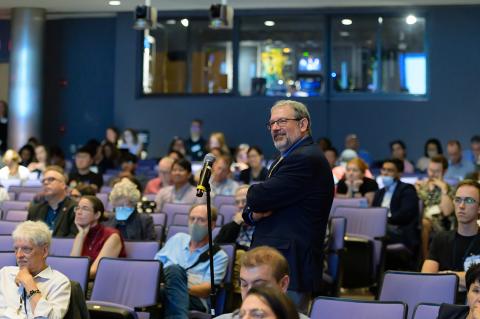
Photo: Marleen Van Den Neste
“We know these responses well,” Bargmann noted. “Things like fatigue, reduced appetite, excessive sleepiness, decreased sociability, nausea and aversive learning are characteristics of these different kinds of outcomes after infection.”
Her lab has studied this state in C. elegans after it has been exposed to Pseudomonas aeruginosa, a bacteria found in the environment. P. aeruginosa is an opportunistic infection that can sicken people and worms.
When exposed to the bacteria for as little as four hours, C. elegans began avoiding the pathogen. If the animal is taught to avoid P. aeruginosa shortly after hatching, it will avoid the bacteria for the rest of its life. And, in certain conditions, this avoidance behavior can be passed down from mother to offspring.
Researchers began searching for animals that didn’t have the normal aversion behavior. “This led to identification of a variety of different genes that we could use as a starting point for studying the animals’ biology,” Bargmann said. Recent findings suggest a neuron called AVK releases a neuropeptide called FLP-1 in response to an infection.
“As we develop better tools to measure physiology, we’ll be able to do more than just look under the lamppost of the molecules that we know about,” she concluded. “We can begin to think more broadly about what kind of changes are occurring in different brain areas and the body that communicates with the brain.”
In addition to Bargmann’s scientific keynote, the anniversary event featured speakers from within and outside of NIMH describing exciting breakthroughs in genetics, imaging, systems, neuroscience, services and interventions.
The symposium will be the first of several events NIMH will host to celebrate its anniversary. Visit https://www.nimh.nih.gov/75years for details.
